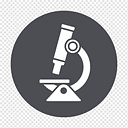Navigating the Complexities of HealthTech Product Management: Key Insights and Strategies
Introduction
In recent years, HealthTech has emerged as a pivotal sector within the broader healthcare industry, revolutionizing how medical services are delivered and managed. By integrating advanced technology with healthcare practices, HealthTech aims to enhance patient outcomes, streamline operations, and reduce costs. At the heart of this transformation lies HealthTech product management, a critical role that ensures the development and deployment of innovative healthcare solutions. This essay explores key insights and strategies essential for effective HealthTech product management, highlighting the unique challenges and opportunities within this dynamic field.
Understanding HealthTech Product Management
HealthTech product management involves overseeing the development, launch, and continuous improvement of technology-based healthcare solutions. This role requires a deep understanding of both technology and healthcare domains, making it uniquely complex compared to product management in other industries. One of the primary challenges in HealthTech is navigating the stringent regulatory environment, which includes compliance with standards such as HIPAA in the United States or GDPR in Europe. Ensuring patient safety and data security is paramount, necessitating rigorous testing and validation processes. Additionally, HealthTech product managers must balance the needs of diverse stakeholders, including patients, healthcare providers, and regulatory bodies, to deliver products that are not only innovative but also practical and compliant.
Key Skills and Competencies
Successful HealthTech product managers possess a unique blend of technical knowledge, healthcare expertise, and soft skills. Firstly, a solid understanding of medical terminologies, healthcare workflows, and technological advancements is essential. This knowledge allows them to communicate effectively with engineers, designers, and healthcare professionals. Strong communication and collaboration skills are also critical, as product managers must facilitate cross-functional teamwork and ensure that all stakeholders are aligned with the product vision. Additionally, data-driven decision-making and analytical skills are paramount in HealthTech, where outcomes and efficacy must be continually measured and optimized. By leveraging data analytics, product managers can make informed decisions, identify areas for improvement, and demonstrate the value of their products to stakeholders.
Strategies for Effective Product Management
Effective HealthTech product management requires a strategic approach that prioritizes user needs, agile development, and data-driven improvements. One of the fundamental strategies is user-centered design, which ensures that products are tailored to the specific needs and preferences of patients and healthcare providers. Engaging with end-users through interviews, surveys, and usability testing is crucial for gathering insights and refining product features.
Another vital strategy is adopting agile methodology, which emphasizes iterative development and continuous feedback. Agile practices enable product managers to respond quickly to changes, address issues promptly, and deliver incremental value to users. This approach is particularly beneficial in HealthTech, where rapid advancements and evolving regulations demand flexibility and adaptability.
Leveraging data and analytics is also a cornerstone strategy. By collecting and analyzing data from various sources, including electronic health records (EHRs) and wearable devices, product managers can gain valuable insights into user behavior, product performance, and clinical outcomes. This data-driven approach facilitates continuous improvement, allowing for timely adjustments and enhancements that optimize the product’s effectiveness and user satisfaction.
Case Studies and Real-World Examples
Examining real-world examples of HealthTech products can provide valuable lessons in effective product management. One notable success story is the development of telemedicine platforms, which have gained widespread adoption during the COVID-19 pandemic. Companies like Teladoc and Amwell leveraged user-centered design and agile development to rapidly scale their services, meeting the urgent demand for remote healthcare. Their success underscores the importance of flexibility and user engagement in HealthTech product management.
On the other hand, there are lessons to be learned from less successful initiatives. For instance, the initial launch of Google Health, a personal health record service, faced significant challenges. Despite being backed by a tech giant, the product struggled due to insufficient user engagement and a lack of integration with existing healthcare systems. This example highlights the critical importance of understanding and addressing the needs of all stakeholders, as well as the necessity of seamless interoperability within the healthcare ecosystem.
These case studies illustrate that while technical prowess and innovation are crucial, the ultimate success of HealthTech products hinges on their usability, stakeholder alignment, and adaptability to the complex healthcare environment.
Future Trends in HealthTech Product Management
The landscape of HealthTech product management is continuously evolving, driven by rapid technological advancements and shifting healthcare paradigms. One of the most significant trends is the integration of emerging technologies such as artificial intelligence (AI), the Internet of Things (IoT), and blockchain. AI, for instance, is enhancing diagnostic accuracy and personalizing treatment plans through predictive analytics. IoT devices, including wearable health monitors, provide real-time data that can be used to track patient health and improve clinical decision-making. Blockchain technology, with its potential for secure and transparent data management, is poised to revolutionize patient data sharing and record-keeping.
